Vacuum Tubes and Photocells
Electron tube analyzer
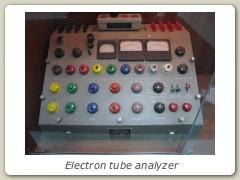
Daystrom Weston CA-1630 Electron Tube Analyzer. Made for the CAA (Civil Aeronautics Administration), the CA-1630 was built to the highest level of sophistication available. Made in 1957, this 1630 is number 160 out of only 360 made. It can output all curves to an external oscilloscope.
Photomultiplier tube
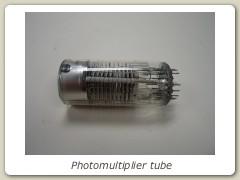
A Photomultiplier Tube (PMT) is a relatively modern device. It is orders of magnitude more sensitive than is a photocell. As a matter of fact, it can measure even single photons. These devices are extensively used in modern research in many diverse branches of physics.
Vacuum Tubes and Photocells
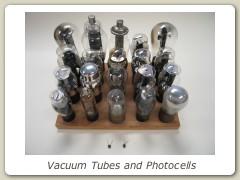
Vacuum Tubes and Photocells were used in the electronic equipment before the advent of transistors and silicon photodiodes. The vacuum tube diode was invented in 1904 by Ambrosa Fleming (University College, London) and the vacuum tube triode was invented by an American inventor Lee DeForrest in 1907. These devices revolutionized electronics and were the backbone of all electronic devices until they started giving way to more energy efficient transistors in the 1950’s and 60’s. A transistor and a silicon photodiode is shown in the picture.
Photocell 1
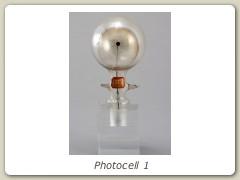
This photocell was used to measure h/e using the photoelectric effect. Silver coating on the inside of the bulb forms the cathode. This photocell predates Photocell 2.
Photocell 2
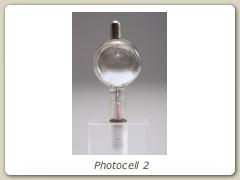
This photocell was used for instructional purposes. The photocathode is the metal film deposited on the back surface, while the anode is the loop of wire.